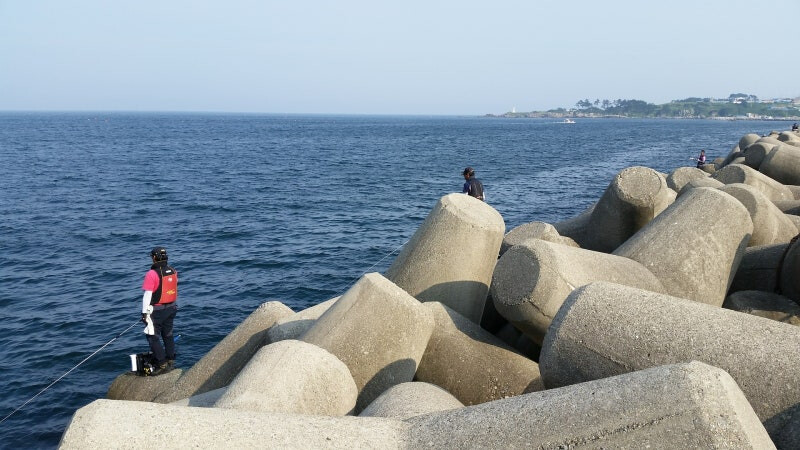
The Pyeongtaek Coast Guard (Chief Woo Chae-myeong) has announced the issuance of a 'Caution' level safety advisory from April 26th to May 2nd, a seven-day period coinciding with the spring tide, which brings about a significant increase in the tidal range and consequently elevates the risk of safety incidents.
The spring tide, characterized by the largest difference between high and low tides, results in swifter currents and rapid changes in coastal topography. This phenomenon substantially heightens the danger of individuals becoming stranded or drowning, particularly in vulnerable areas such as breakwaters, rocky shores, intertidal reefs, mudflats, causeways, tetrapods (concrete wave dissipating blocks), piers, and uninhabited islands. The Coast Guard strongly urges recreational visitors and anglers to exercise extreme caution in these locations during this period.
In response to the heightened risks, the Pyeongtaek Coast Guard will intensify its preventive patrols, focusing on areas identified as particularly susceptible to coastal safety incidents like flooding and isolation. Additionally, they will maintain a state of heightened emergency preparedness to ensure a swift and effective response to any potential incidents. The Coast Guard has affirmed its commitment to making every effort to prevent coastal accidents during this elevated risk period.
To enhance public safety awareness and provide access to crucial maritime safety information, the Pyeongtaek Coast Guard recommends the utilization of maritime navigation and safety applications such as 'Badanavi' (바다내비), 'HaeRoad' (해로드), and 'Safe Sea' (안전해). These applications offer real-time tidal charts and a wealth of other essential safety information that can aid individuals in making informed decisions and mitigating potential risks associated with the high tidal range.
Enhanced Safety Measures and Public Awareness Campaign Amidst Spring Tide Alert
The Pyeongtaek Coast Guard has proactively implemented a comprehensive safety protocol in anticipation of the elevated risks posed by the upcoming spring tide. Recognizing the inherent dangers associated with significant tidal fluctuations, the Coast Guard is undertaking a multi-pronged approach that combines heightened surveillance, rapid response readiness, and a robust public awareness campaign.
During the seven-day 'Caution' alert period, coastal patrol units will significantly increase their presence in high-risk zones. These patrols will not only serve as a visible deterrent but also enable early detection of potentially hazardous situations and provide timely assistance to individuals who may find themselves in precarious circumstances. The Coast Guard's strategy involves deploying both land-based and maritime patrol teams to cover an extensive range of vulnerable coastal environments.
Special attention will be paid to areas known for attracting recreational activities and fishing enthusiasts. Breakwaters, often favored spots for anglers, can become treacherous as surging tides engulf previously accessible platforms. Rocky shores and intertidal reefs, popular for exploration, pose the risk of sudden isolation as the tide rises rapidly. Mudflats, while offering unique ecological experiences, can lead to individuals becoming trapped in the soft sediment as water levels change. Causeways and land-connecting bridges may experience flooding, rendering them impassable. Tetrapods, designed to dissipate wave energy, can become slippery and unstable under strong tidal currents. Piers and docks require extra vigilance due to the increased potential for falls into the water. Uninhabited islands present the most significant risk of isolation, demanding careful planning and awareness of tidal schedules.
The Pyeongtaek Coast Guard's emergency response teams will be placed on high alert, ensuring that they are prepared to deploy swiftly in the event of any reported incidents. This includes the readiness of rescue vessels, specialized equipment, and trained personnel capable of handling various emergency scenarios, such as search and rescue operations for stranded individuals or those who have fallen into the water.
Complementing these operational measures is a concerted public awareness campaign aimed at educating the public about the risks associated with the spring tide and promoting safe coastal practices. The Coast Guard will utilize various communication channels, including local media outlets, social media platforms, and public service announcements, to disseminate crucial safety information. These messages will emphasize the importance of checking tidal charts before engaging in coastal activities, being aware of the changing water levels, avoiding venturing into hazardous areas during peak tidal flow, and never underestimating the power of the sea.
Furthermore, the Pyeongtaek Coast Guard is actively promoting the use of mobile applications that provide real-time maritime safety information. 'Badanavi' offers comprehensive navigation tools and real-time updates on sea conditions. 'HaeRoad' provides detailed route information and potential hazards for mariners and coastal visitors. 'Safe Sea' offers a range of safety features, including emergency contact options and location-based risk assessments. By encouraging the public to download and utilize these applications, the Coast Guard aims to empower individuals with the knowledge and tools necessary to make safer decisions while enjoying coastal areas.
The Coast Guard underscores the importance of personal responsibility and encourages all individuals engaging in coastal activities during the spring tide period to prioritize their safety. This includes wearing appropriate safety gear, such as life vests when boating or fishing, being mindful of their surroundings, and avoiding risky behaviors. Parents are urged to closely supervise children near the water, and groups are advised to stay together and maintain communication.
The Pyeongtaek Coast Guard's proactive measures and public awareness efforts reflect its unwavering commitment to ensuring the safety and well-being of all individuals who utilize and enjoy the coastal waters under its jurisdiction. By combining enhanced operational readiness with a comprehensive public education campaign, the Coast Guard aims to mitigate the risks associated with the spring tide and foster a culture of safety along the coastline. The seven-day 'Caution' alert serves as a critical reminder for everyone to exercise caution and take necessary precautions to prevent accidents during this period of heightened tidal activity.
[Copyright (c) Global Economic Times. All Rights Reserved.]






























